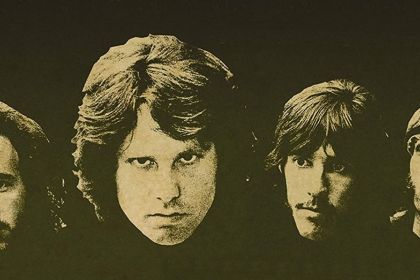Music Theory
Peace Frog: the only Doors song featuring Lydian mode

The Doors CD cover
Peace Frog, released by the Doors on their 1970 album Morrison Hotel, has been met by a near-unanimous approval from reviewers and fans alike since its first introduction into the band's catalogue. Fans have been looking for hidden meanings in the song's lyrics, attempting to connect them to possible events in the band's personal lives or history at large, specifically in reference to the lyric mentioning the bloodshed in Chicago, New Haven, Venice, and Los Angeles. Other speculations touch on the song title itself, with the main theory claiming that Peace Frog might refer to Jim Morrison's Native American name.
The song's origins reportedly start with Robby Krieger's guitar riff which gradually evolved into an arrangement that was rather typical for the band. The lyrics were applied at the later stage, compiled from two ready-made poems by Morrison.
Peace Frog's compositional structure combines two modal musical modes, Dorian and Lydian forms, creating a unique mood that undoubtedly contributes to the memorability of the tune. Curiously, the song shows the only example of the Lydian mode in the Doors' entire output which in itself is not replete with classical harmonies, featuring only two dozen tracks that follow tonal theory.
Listen to Peace Frog (2020 Remaster) by The Doors:
In the harmonic analysis of the verses chord chains, the scale degrees (denoted with Roman numerals) show the following progression in G Dorian: Gm–C–B♭ or i–IV–III. The Dorian mode is considered a minor one and is detailed in our article covering 5 songs featuring Dorian mode.
There is a short deviation into G Lydian mode seen in the progression: Em–G–F♯m–A or vi–I–vii–II which follows the lyrics "she came in and she drove away, sunlight in her hair". This chord chain is a typical example of a so-called harmonic sequence where a certain musical turnaround is repeated in a modified form involving different scale degrees. Here the segment of the sequence is formed by two chords vi–I whose roots are spaced from each other by the musical interval of a minor third. This segment is repeated at the seventh (vii–II) degree of the Lydian diatonic scale.
Explore how The Doors uses other musical modes:
- Dorian mode in The Doors songs
- The Doors songs with Aeolian and harmonic minor modes
- Mixolydian mode in The Doors songs
Learn more about the structure of these diatonic musical modes explained through the harmonic analysis of popular songs in the following articles:
- Popular songs using Lydian mode
- Beatles songs featuring Lydian mode
- Lost for Words: Pink Floyd's only Lydian song
- The Bells of Rhymney: two major modal modes of famous protest song
- Reelin' In the Years: the tandem of effective lyrics and one of the best guitar solos of all time
- Knights of Cydonia: Dorian-mode refrain boosting best Muse song
- No Quarter: two minor modal modes of Led Zeppelin's psychedelic track



